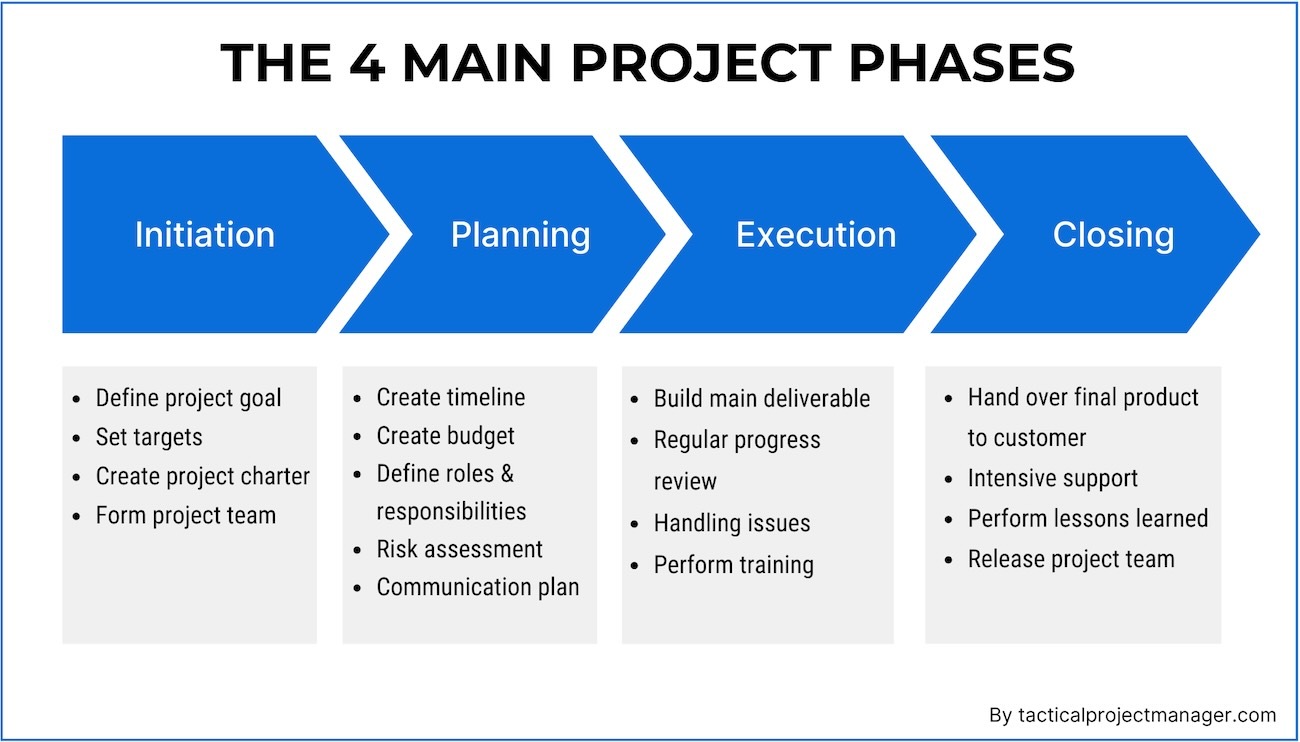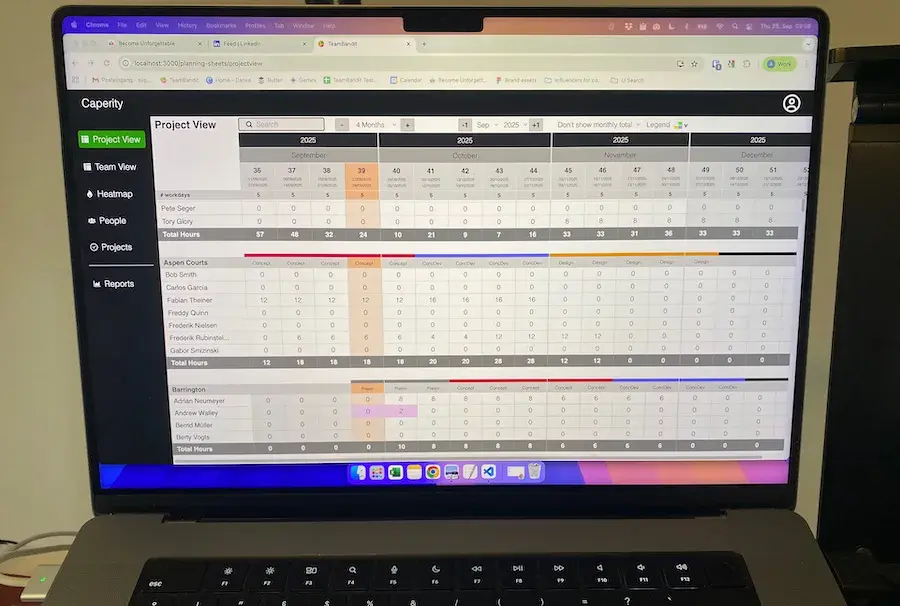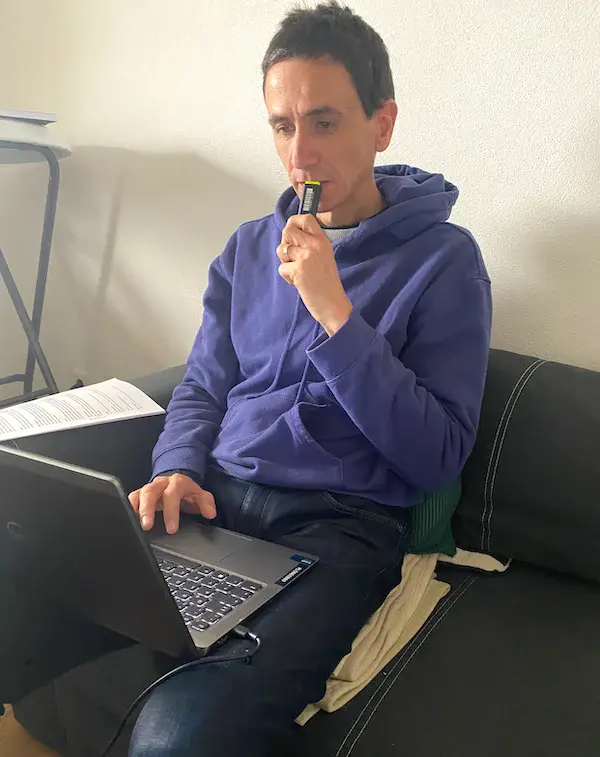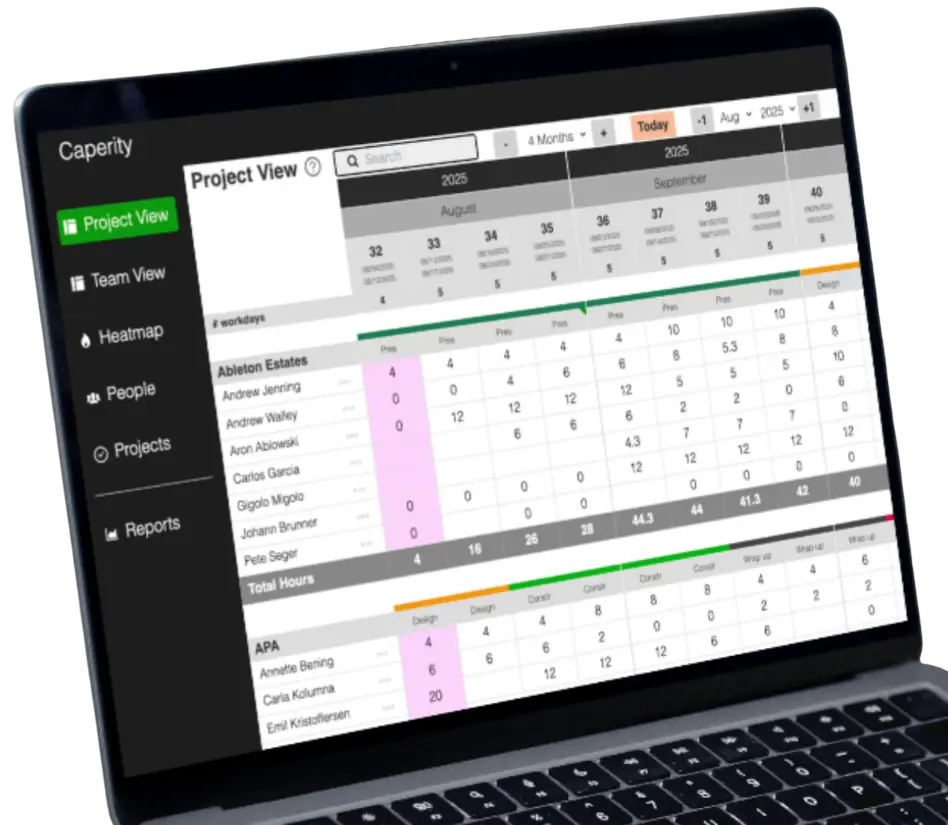Were you handed a big project?
Are you looking for the best way to approach it?
A smart first step is to break the project into manageable chunks.
The project lifecycle model gives you a good structure for organizing your project. It consists of four main phases: initiation, planning, execution, and closing.
For each phase, we have a set of recommended steps. These steps help you take a project goal from idea to implementation. All happens in a logical sequence, ensuring that each phase builds upon the previous one. Due to its generic nature, this phase model can be applied to projects of any size or field.
In this guide, I’ll explain what each phase involves and the key steps within them.
What is the Project Life Cycle?
The term “project life cycle” indicates that projects go through a series of developmental stages and are meant to be temporary. In other words, every project has a start and an end, even if it sometimes feels like they go on forever.
Rather than approaching work in an unsystematic way, we follow a sequential order with extensive upfront planning. This approach has several benefits:
- Everyone has a clear understanding of the tasks and deliverables within each phase.
- We have accountability built in, because the end of each phase marks a milestone where specific tasks must be completed.
- We also minimize unnecessary effort or spending, because we only start executing once we have a complete understanding of what needs to be done.
Let’s look at each phase in detail:
The 4 Project Management Phases
It may seem that the four project phases apply only to big projects with timelines spanning months, but that’s not the case. The phases can be adapted to fit any project, no matter its size or duration. You can set each phase to be as short or as long as makes sense for your project.
By reading the following explanation, you’ll see how to break down your project into these phases and understand what work should happen in each one. This approach will help you organize your tasks and make sure you don’t miss any important steps.

Initiation phase
The initiation phase is where an idea is introduced and the organization commits itself to pursue it as a project.
This is the phase where an idea begins to take shape, going from “maybe we could do it” to “we’ll do it.” It starts when someone in the organization identifies a need or opportunity and decides to kick off a project.
Initial discussions take place to explore the idea and its potential benefits. These often lengthy conversations are a good thing, because we want to ensure we have a common understanding of what the project should achieve. Ideally, the team agrees on a value-based goal that promotes the organization’s vision and strategy, and not just a technical goal that provides zero real benefit to the organization.
Overall, the main driver behind the project seeks support from various stakeholders and departments to ensure the project has the necessary backing and resources. Basically, the organization checks if others are interested in the project too, gathering input and gauging the level of interest.
Once there is enough support, the project proposal is formally submitted for consideration. What follows are discussions with leadership, where the project’s potential impact and alignment with organizational goals are assessed. If the leadership team approves the project, we have an official project and may continue our preparatory activities.
Once approved, objectives are defined, outlining what the project is supposed to achieve on a more detailed level, for example departmental goals or particular business metrics.
The next step is to search for a project manager with the necessary experience who is available in the foreseen timeframe. The project manager will be in charge of building a detailed plan and executing the project.
The project team is then formed, with roles and responsibilities clearly outlined. The high-level scope of the project is determined, providing a broad view of what the project will cover.
A rough time frame for the project is established, giving a rough estimate of how long the project will take. Resource needs are assessed to ensure that the project has the necessary resources and budget. The feasibility of the project is also checked to confirm that it is practical and achievable within the given constraints.
By the end of this phase, all stakeholders should be on board with their roles and responsibilities on paper. Everyone should have a common understanding of the project’s goal, scope and approach. There’s one main document we draft during this phase: the project charter. This document outlines the project’s main parameters, like objectives, scope, team setup, and a high-level plan.
Keep in mind that the initiation phase often feels quite chaotic. The main parties have heated discussions about what is the “right” way to go forward and stakeholders negotiate to ensure their specific interests are considered. Plus, there is a general uncertainty about whether the project will get the green light or not. Fortunately, this chaos will settle once the project is fully defined and we move into the planning phase.
Planning phase
After the initiation phase, the project manager takes over to refine and elaborate on the project’s scope. This involves clearly defining what is included in the project and what is not, ensuring everyone understands the boundaries.
During this phase, requirements are gathered from the customer and stakeholders to understand exactly what needs to be delivered. This helps in creating a detailed resource plan, specifying the personnel, equipment, and materials required. A detailed cost estimate is developed, breaking down all anticipated costs.
A detailed timeline with milestones is created, mapping out the key stages of the project and their deadlines. Vendors are asked for quotes, and negotiations are conducted to secure the best possible terms. A risk assessment should be performed to identify potential pitfalls and develop strategies to mitigate them.
A communication plan is established to ensure clear and consistent information flow among stakeholders and team members throughout the project. This plan outlines how and when updates will be provided and when the various sub teams will meet.
It’s important to note that during the planning phase, actual procurement of resources and construction or development work do not begin. The focus remains on preparing and planning to ensure a smooth start to the execution phase.
The outcome of the planning phase is a detailed plan that provides enough information and structure to begin the actual work. Key documents produced include the project timeline and budget.
Once the planning is complete, a kickoff meeting is held to officially start the project. At this point, the project is approved, and the team is ready to move forward with execution.
Execution phase
The execution phase is where the project vision turns into reality, turning a plan into tangible results. Up to this point, we’ve focused on planning and paperwork, but now it’s time to implement our plan.
Here’s a breakdown of what happens during this phase:
The execution phase involves concepting and building the project deliverables. For example, if the project is to build a new software application, this phase includes writing code, designing the user interface, and integrating necessary systems.
Before committing fully, we might start with a prototype. For example, in developing a new product, creating a working model allows us to test its functionality and gather feedback from customers, ensuring we’re on the right track.
We conduct frequent meetings with the sponsor or client to ensure the work meets their expectations. For example, demonstrating a software feature to a client helps confirm it meets with their needs. These check-ins simplify adjustments based on client feedback, ensuring the final product meets the defined quality standards. In the same way, we look for regular alignment with our other stakeholders.
Procurement and vendor management become active during this phase. We acquire the necessary materials or services, such as ordering supplies or hiring subcontractors for an engineering project.
Cost management is critical, because the bulk of project expenses incur in the execution phase.
We monitor expenditures against the budget, using budgeting sheets to track spending and ensure we’re not overspending. Implementing cost-saving measures and adjusting plans as needed helps us control costs and stay in budget.
Effective team communication and issue resolution are essential. Regular updates, such as daily or weekly meetings, discuss progress, identify issues, and address potential roadblocks early on to avoid major delays.
As work progresses, testing of the “product” ensures it meets required standards and functions as intended. For instance, quality assurance testing in software development checks for bugs and performance issues.
Training is another key activity of the execution phase. We create or update training materials to ensure users can use the new product, process or system — or whatever we are building.
For example, developing user manuals and conducting training sessions helps users adapt to new software. Organizational change management may be necessary to help the organization adjust to new processes or technologies introduced by the project.
At the end of the execution phase, the project outcome is fully realized and handed over to the client. The client begins to use the new product or system, marking the transition from planning to practical use.
We ensure a smooth handover by providing necessary support and training, helping the client get started and fully utilize the project outcomes. This marks the completion of the execution phase and sets the stage for the final phase: closing.
Closing phase
The closing phase marks the final stage of the project lifecycle, where we wrap up project activities and focus on ensuring a smooth transition to normal operations.
Although the main deliverables are completed, the closing phase has its own set of challenges and pitfalls that must be managed very carefully.
One of the main activities during this phase is providing assistance during a “hypercare” period. This involves offering intensive support to the client as they fully integrate and use the new product, process or system. It ensures any issues or questions are addressed promptly, facilitating a smooth transition.
Another crucial task is gathering final costs and preparing a final project report. This report details the financial performance of the project, comparing actual expenses against the budget and highlighting any variances. It also includes an overall summary of the project’s outcomes, deliverables, and performance metrics.
Doing a lessons learned session is helpful for continuous improvement. The project team reflects on the entire project, identifying what went well and what could be improved. These insights are documented and shared with the organization to inform future projects and enhance project management practices.
Releasing the project team is another important step. With the project concluded, team members are reassigned to other tasks or projects. This process involves formally acknowledging their contributions, providing feedback, and ensuring a smooth transition to their next roles.
Finally, ensuring all project documentation is completed and archived is essential. This includes storing all project records, agreements, and reports in a central repository for future reference.
In summary, the closing phase is about giving proper support, wrapping up costs and reports, capturing lessons learned, releasing the project team, and finishing all the paperwork. Handling these tasks well ensures a smooth end to the project. By documenting lessons learned, we help future project leaders by sharing what has worked and how to avoid the pitfalls encountered in previous projects.
Don’t let phases constrain you
The model I shared is a great starting point for organizing projects. It provides a clear structure and emphasizes thorough planning before execution, which is never a bad idea. This phased approach works well for most projects, but don’t take it as written in stone!
For example:
- You can label phases however you like.
- You can add new phases if needed. For example, in my projects, we added a “study phase” after the planning phase. The study phase allowed us to assess customer requirements at a more detailed level, evaluate potential solutions and come up with a more reliable schedule and cost estimate.
- You might find it useful to add phases around major technical activities, such as a “migration phase” involving data transfers or a “transition phase” for projects involving significant changes in operations or processes. Use whatever structure you think allows you to manage the involved project work in an effective way.
Use the best methods within each phase. During the concept development, you might use agile methods to simplify collaboration and integrate feedback quickly. For instance, a deliverable may be some kind of software user interface. In this case you may use agile sprints to refine the product iteratively based on user feedback. Alternatively, some project deliverables may require a more structured approach, where the waterfall method is more appropriate.
The key is to adapt the framework to best support your project, not to force it into a fixed structure. Each project is unique, and your approach should reflect that. If you’re curious about agile and other project management approaches, check out my article that provides practical tips on when to use agile and when to go with waterfall.

Busting Myths: No Separate “Monitoring and Control” Phase in Projects
You might have come across articles suggesting there are five phases in project management, adding a “monitoring and control phase” to the usual four. This is wrong, and it is based on a misunderstanding of the PMI’s framework. Monitoring and controlling are not separate phases. They are ongoing activities throughout the project. It would be odd to have a dedicated phase for monitoring progress and costs when these tasks should be part of a project manager’s daily routine.
Let’s clear this up: there is no “Monitoring and Control” phase in project management. The confusion stems from the PMI’s definition of so-called process groups. Process groups are used to categorize the different activities and processes involved in managing a project. For example, a project involves work focused on initiating, planning, executing and closing items tasks. Process groups are just a way to organize methodical steps into a logical sequence. Don’t confuse them with project phases!
For more details, read about PMI’s process groups. There’s also a forum thread confirming what I stated above.
Additional guides you may find useful
Now that you understand the important concept of using phases to organize your project, you might want to learn more about project preparation. What are the recommended steps? How do you ensure you don’t miss anything? That’s exactly what my other articles cover. Here is a selection of articles you should check out next.
How to Plan a Project: From Zero to Green Lights
This article is for you if you’re starting a new project. It breaks down the main activities for launching a new project, including everything you need to do step-by-step, like setting clear goals, identifying your main stakeholders, and planning resources and creating a timeline. Each step is explained with practical tips, making it easy for you to follow and apply.
Essential Project Documentation
In this article I walk you through the 11 project documents I recommend for every project. Each document is described in detail, including its purpose, structure, and how to create it. This guide helps you understand what information to capture and how to organize it in a professional way.
Ultimate Guide to Project Kick-offs
This is a step-by-step guide to preparing and hosting a project kickoff meeting. You’ll find tips on creating an agenda, preparing a clear slide deck, and communicating roles, responsibilities, and project goals. The kickoff is extremely important and you want to make sure everyone is aligned and engaged from the start.
Hope you found this article valuable!
Cheers, Adrian
Author
-
Hi, I’m Adrian, a Senior Project Manager and the Creator of Tactical Project Manager, where I teach a pragmatic approach to project management. Led large-scale IT and business projects for over 10 years. My goal is to enable you to lead any project with confidence.
View all posts



